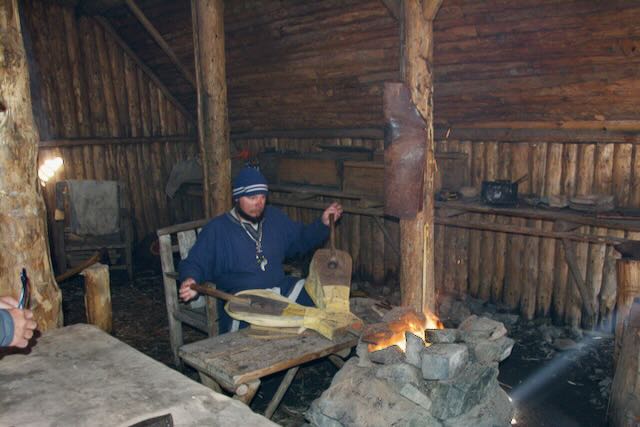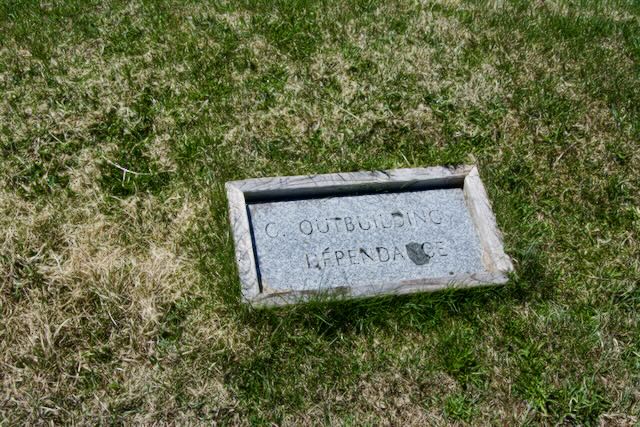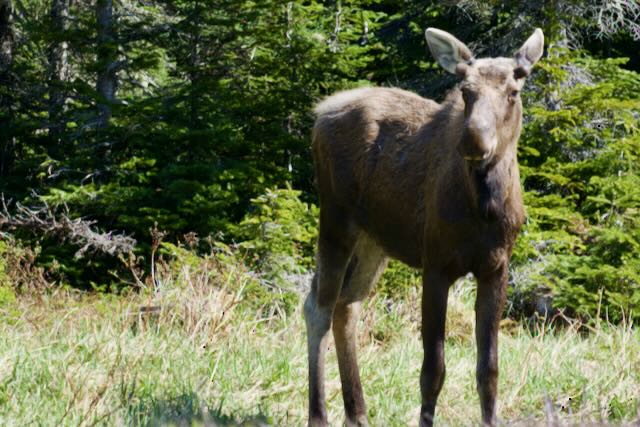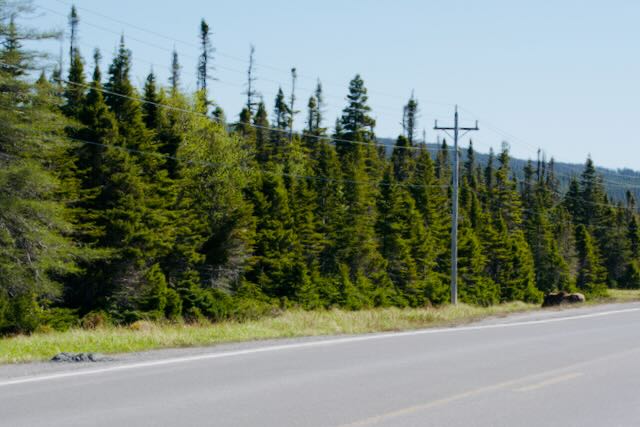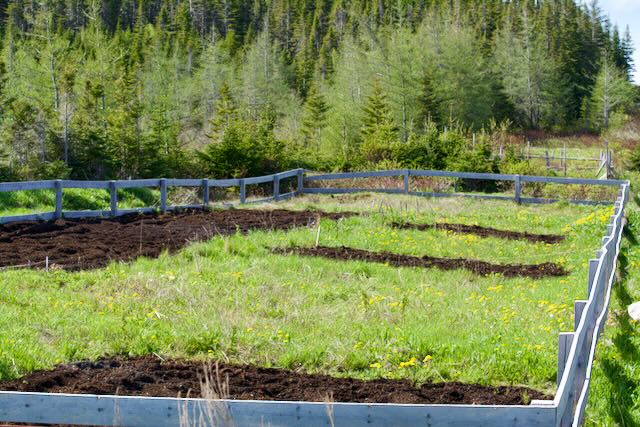From the parking lot at L'Anse aux Meadows, you look up a hill to see rusted iron silhouettes of vikings arriving from Greenland. Walk along a short path to find a modern visitor's centre. Inside you can watch a short introductory video and browse through a small array of exhibits. One is a model of the ship that we saw in Oslo, Norway.
On the path to the site we realized that the snow we had only seen in the hills was now down to our level.
At the site all you can see are small plaques on the ground and small mounds and dips where the walls and rooms have been. Archeologist have explored these places for artifacts to determine what each building was used for, then they filled them back in. This small building was found to be a forge where iron was formed into tools and utensils. This was probably the very first place in the Americas where iron was smelted.
Beside the building is a small creek with very rusty brown water. Our boardwalk goes over an iron bog. By poking a stick into the bog the vikings were able to locate globs of iron.
In this picture you can see the outline of one of the larger buildings. We stopped at each marker and the guide explained the usage for each building and gave us a sense of the history.
It is believed that the vikings only chose this site as a base station and it was never meant to be permanent. From here they explored this land that they called Vinland. Grapes (and beech trees) do not, nor have they ever grown in Newfoundland, but they do grow wild in New Brunswick. Here, however, there are signs of winemaking and of beech wood used in their building and their ship repairs. The vikings travelled beyond Newfoundland to harvest whatever they could for trade.
According to written records, the vikings soon began to trade with Europeans. From Europe they learned that they could get the same resources that they were collecting in Vinland. The journey to Europe was much shorter and much safer and much less expensive. As well, in Vinland the relationship with the natives was not going well.
After only about fifteen years, L'Anse aux Meadows was deserted. They took everything they could carry and burned the buildings.
Walk a little further and you find a recreation of the village as they believe it would have been. Actors dressed as vikings carry on about their work. always willing to stop and chat.
This is a longhouse, where thirty or so people would live.
The outer walls are made from dried and stacked peat moss. The inner frame and the doorways are wood. The roof is sodded.
This was private sleeping quarter. Only a lucky few had such luxury.
Most would sleep on benches in one of the great rooms.
This is a lathe which is powered by a treadle.
Here is a loom where textiles were made from natural fibres using natural dyes. Stones tied to the yarn maintained tension.
The sails of the viking ships were actually made on a loom such as this. Since the loom could only be as wide as a woman's outstretched arms, the sails were made in stripes. The stripes were then sewn together by hand.
This sculpture is meant to symbolize the meeting of two vastly different cultures. On the left you can see a stylized version of a viking ship. On the right is a native war club.
This meeting is very significant in terms of human history.
It is now commonly accepted that humanity first existed in Africa. From here humans roamed widely until they populated all of the continents except Antarctica.
Some travelled north and east, eventually reaching North America and Australia. Over many millennia, humans adapted and different races emerged.
Others travelled north and west to occupy parts of Asia and Europe.
Those who travelled east eventually ran into the Atlantic Ocean, which they could not cross.
Those who travelled west eventually ran into the Atlantic Ocean, which they could not cross.
L'Anse aux Meadows was the actual spot where humanity came together again after millions of years of separation. This site represent the closing of the circle of human life on earth.
This small detail shows the prow of the viking ship in the sculpture.









